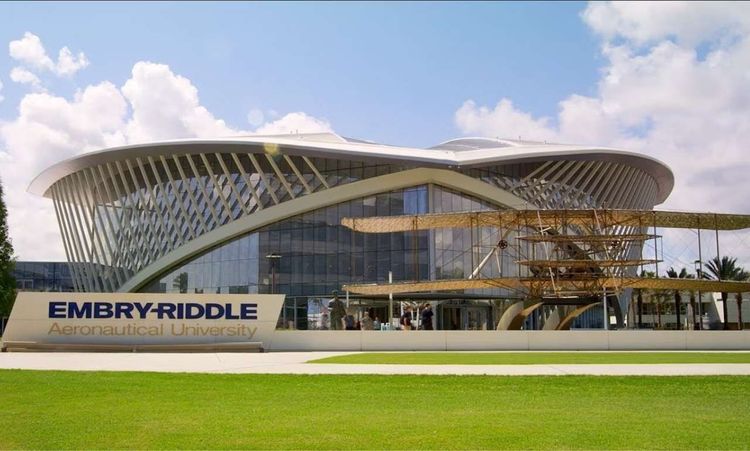Becoming a pilot is a dream for many, but choosing the right school is key to ensuring you succeed. The best pilot schools in the US offer a combination of top-notch facilities, experienced instructors, and extensive flight training to ensure you're prepared for a successful career.
Every successful pilot started precisely where you are now, looking for the right flight school to launch their dreams. After connecting with hundreds of pilots and flight instructors nationwide, let's look at the best pilot schools in the US.
Safety Record

The best flight schools maintain pristine safety records beyond basic FAA requirements. Here's what you need to check:
Recent accident history shows you the real story behind the marketing materials. Look for schools with zero incidents in the past five years. The FAA's database tells the whole story about any safety concerns.
Training aircraft maintenance schedules reveal how seriously a school takes safety. Top schools often replace parts before they're required to. They maintain detailed records you can actually review.
Some schools implement Safety Management Systems (SMS) that exceed FAA standards. These programs actively identify and address potential risks before they become problems. Ask about their specific safety protocols during your visit.
Cost Comparison
Becoming a pilot isn't cheap, but smart choices can save you thousands. Complete professional pilot training typically ranges between $60,000 and $200,000.
Hidden costs can surprise you if you're not careful. Some schools advertise low hourly rates but charge extra for ground instruction, books, and exam fees. Others include everything in one package price.
Financial aid options vary dramatically between schools. Some offer in-house financing or partner with specific lenders. Universities often provide access to federal student loans and scholarships.
Many schools now offer fixed-price programs that guarantee the total cost upfront. This can protect you from unexpected price increases during your training.
School Visits
Virtual tours are great, but nothing beats walking through the flight line yourself. Schedule visits during peak training hours to see the school in full swing. Watch how instructors handle busy days and multiple students.
Talk to current students about their experiences. Ask about scheduling challenges, instructor availability, and maintenance delays. Their honest feedback is worth its weight in gold.
Check out the facilities beyond just the aircraft. Quality ground training spaces, simulators, and maintenance facilities tell you about the school's overall investment in student success.
Location
Schools in Florida or Arizona offer more flyable days per year. However, training in varied weather conditions builds valuable experience.
Consider the airspace complexity around the school. Training near busy commercial airports provides excellent real-world experience. But it might also mean more ground time waiting for clearances.
Living costs near the school can significantly impact your total expenses. A school with slightly higher training costs in a low-cost-of-living area might save you money overall.
Program Offerings
Different career goals require different training approaches. Airlines look for specific experience and qualifications. Make sure your chosen school's program aligns with your career plans.
Structured syllabi help you track progress and stay motivated. Look for schools using modern training management systems. These tools allow you to monitor your advancement and identify areas needing extra attention.
Technology integration varies widely between schools. Some use paper logbooks and older aircraft; others offer glass cockpits and electronic flight bags from day one.
Top US Flight Schools
Florida Flyers Flight Academy

Location advantage: Year-round flying weather in sunny Florida means faster program completion. Students typically log 15-20 flight hours monthly.
Their accelerated commercial pilot program gets you from zero experience to commercial pilot in about 12 months. The structured curriculum eliminates common training delays.
Strong airline partnerships help graduates transition directly into regional airline positions. Their job placement rate exceeds 90% within six months of graduation.
Modern fleet includes Cessna 172s with G1000 glass cockpits. This advanced avionics experience gives graduates a competitive edge in airline interviews.
University of North Dakota
UND operates one of North America's most extensive training fleets, with over 100 aircraft. Its maintenance standards exceed FAA requirements.
Research-driven training methods incorporate the latest aviation education developments. Students benefit from cutting-edge safety practices and training techniques.
Winter weather operations training provides valuable experience in challenging conditions. This unique exposure makes graduates especially attractive to airlines.
The school's partnership with multiple regional airlines offers direct hiring pathways, and many graduates transition directly into airline positions.
Purdue University
Purdue's aviation program builds on decades of excellence. Notable alumni include astronauts and airline executives.
Their airline-focused curriculum prepares students specifically for commercial aviation careers. The program includes advanced systems training and airline operations coursework.
The state-of-the-art simulation lab features the same equipment major airlines use, so students graduate already familiar with professional airline operations.
Industry partnerships provide networking opportunities and potential job offers before graduation. Many airlines recruit directly from Purdue's campus.
Embry-Riddle Aeronautical University

ERAU maintains campuses in Florida and Arizona, offering different training environments. Students can even transfer between locations.
Their comprehensive curriculum covers everything from basic flight skills to advanced airline operations. The program includes specialised courses in high-altitude operations and international procedures.
Global alumni network opens doors worldwide. Graduates work for major airlines across six continents. Research partnerships with aviation industry leaders keep training current with the latest developments. Students often participate in cutting-edge aviation research projects.
Kingsky Flight Academy
Focusing on maintaining low student-to-instructor ratios ensures individual attention. Students typically work with the same instructor throughout their training.
International student services include visa support and housing assistance. Their staff helps navigate complex immigration requirements.
The modern fleet features the latest avionics and safety equipment. Regular upgrades keep aircraft current with industry standards.
Accelerated programs are available for focused students. Some complete commercial pilot training in as little as 10 months.
[Content continues with detailed sections for remaining schools...]
Conclusion
Choosing the right pilot school involves carefully weighing multiple factors. Consider your career goals, budget, and preferred learning style. Remember that the cheapest option isn't always the most cost-effective long-term.
Take time to visit several schools before making your decision. Talk to students, instructors, and graduates. Pay attention to the overall atmosphere and professionalism.
Your choice of flight school will influence your entire aviation career. Make an informed decision based on thorough research and personal visits. The right school matches both your current needs and future goals.
Also Read: How to Make Money in Nursing School




